I am trying to plot the values of a bitwise circular shift on 1 byte. I'd like to have a slider let me change the original input value. I'm using the slider example on the matplotlib site for reference, but for some reason even though I pass in 0-255 as my slider range when I run my script the range is always 0-7. I'm guessing that somehow the slider is getting locked to my maximum number of x values, but I don't see how. How do I get the slider to let me pick the full 0-255 range?
Also, despite the min/max I've given the slider it inserts some padding for going below 0 at the front, and randomly draws a verticle line in the middle of my slider. How do I get rid of it? (also what is it for? The purpose isn't obvious to me)
Picture of slider only going up to 7:

Code:
import matplotlib.pyplot as plt
from matplotlib.widgets import Slider
from numpy import uint8
from numpy import uint16
from numpy import uint32
from numpy import uint64
def sizeof(x):
return [uint8, uint16, uint32, uint64].index(x) + 1
def rot(x, i):
return type(x)((x >> i) | (x << (sizeof(type(x))*8 - i)))
def plotShifts(x):
origType = type(x)
maxval = type(x)(-1)
numrots = sizeof(type(x)) * 8
vals = [rot(x, i) for i in range(numrots)]
print vals
l, = plt.plot(range(numrots), vals, 'ro')
axcolor = 'lightgoldenrodyellow'
inputax = plt.axes([0.15, 0.05, 0.65, 0.03], axisbg=axcolor)
inputsl = Slider(inputax, 'Input', 0, maxval, valinit=0, valfmt="%d")
def update(x):
vals = [rot(origType(x), i) for i in range(numrots)]
l.set_ydata(vals)
plt.draw()
inputsl.on_changed(update)
plt.axis([-0.5, numrots-1 + 0.5, -2, maxval + 2])
plotShifts(uint8(1))
plt.show()